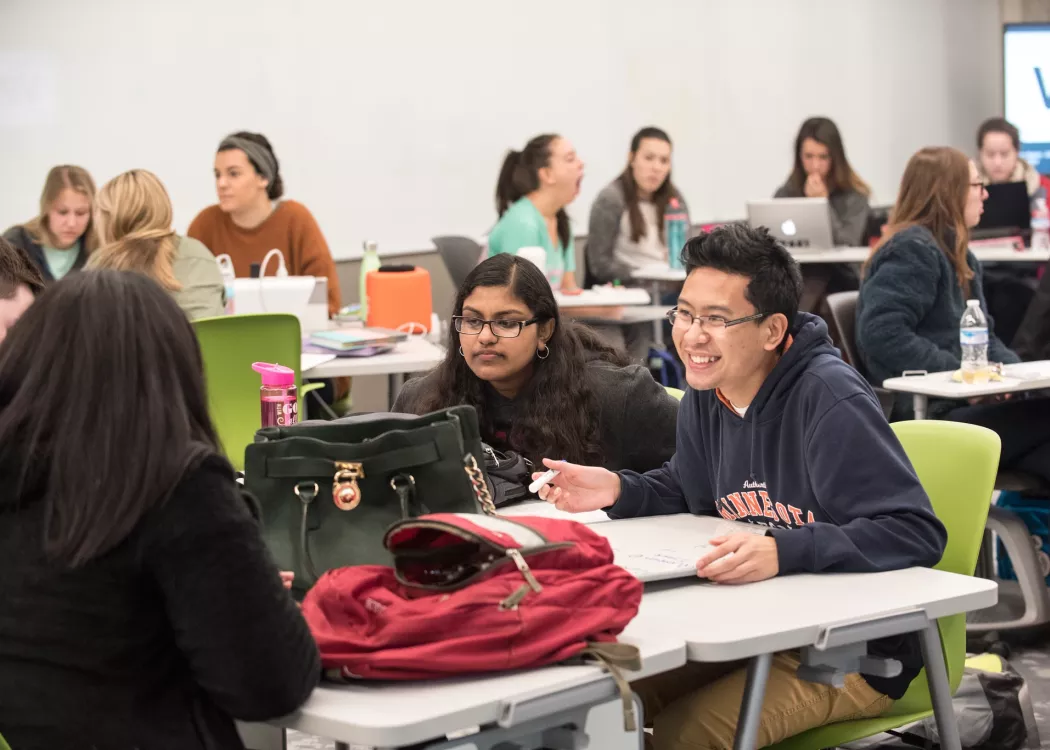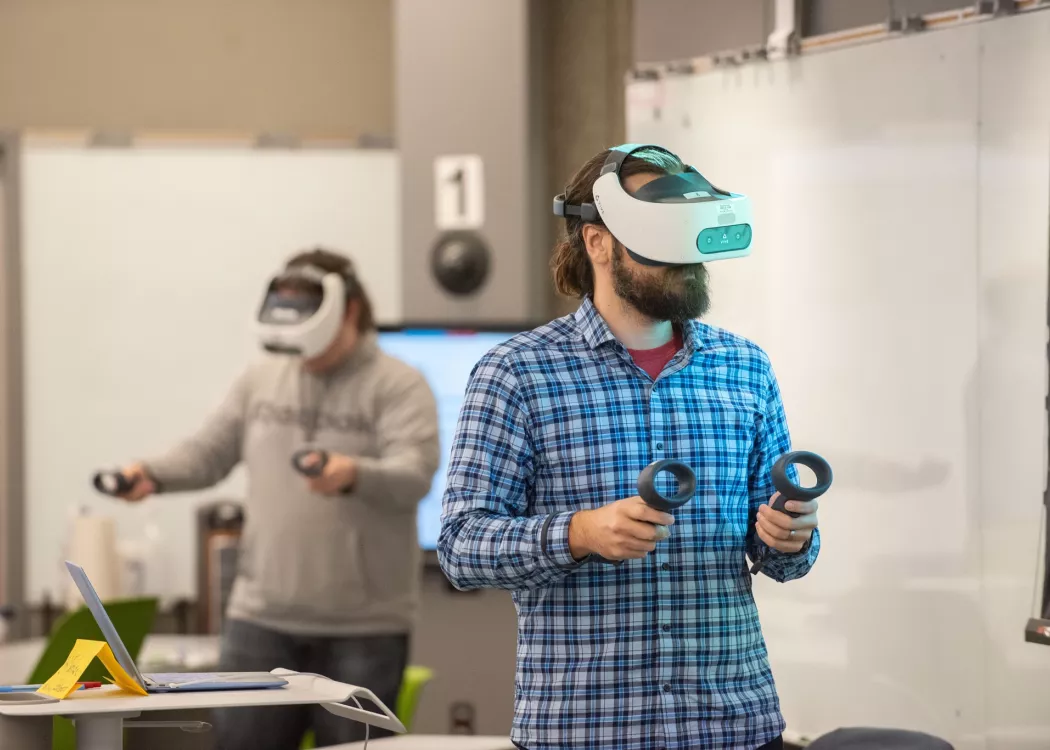Teaching Innovation Learning Lab
A space for faculty-driven exploration and testing of innovative teaching methods that support student success.
About Us
In this cutting-edge active learning space you’ll be able to try all sorts of new things: test instructional technologies, observe new pedagogies, or develop the next teaching innovation to drive student success at UofL.
Located on the 3rd Floor of Ekstrom Library, in the TILL you can:
- Develop the next teaching innovation to drive student success at UofL.
- Experience a technology-enabled active learning space
- Collaborate and observe new pedagogical methods and active learning approaches to teaching.
Explore the Teaching Innovation & Learning Lab

Explore the TILL
View the different types of spaces available for testing innovative teaching methods to support student success.

TILL Frequently Asked Questions
Review our guidelines and FAQs before signing up to teach in the TILL

VR/XR in the TILL
Explore the possibilities for integrating virtual reality in your course in the TILL Staff members are available to assist with the process.

Active Learning Strategies
Learn how to incorporate Active Learning techniques in both face-to-face and online courses with this modules.

